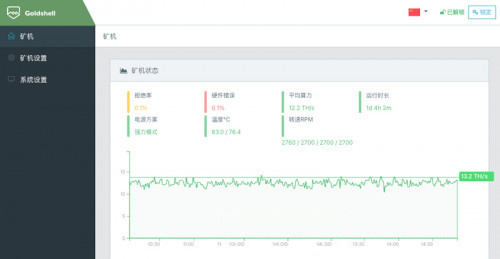ASIC Miner ICERIVER KAS KS0 Profitability In the realm of cryptocurrency mining, the Iceriver KAS KS0 miner has garnered widespread attention. Tailored specifically for the Kaspa network's KHeavyHash algorithm, it boasts high hashing power and low power consumption, making it an ideal choice for many miners. In this article, we will comprehensively assess IceRiver KS0 profitability while considering the Kaspa market conditions and the attributes of KS0 miner. Kaspa Market Dynamics Kaspa is a vibrant cryptocurrency network aimed at delivering high performance and scalability for everyday transactions. At the time of writing this article, the Kaspa coin trades at approximately $0.04959. But it's essential to note that cryptocurrency markets are highly susceptible to price volatility. Hence, investors must remain vigilant about market dynamics. Additionally, the Kaspa network's mining difficulty and reward mechanisms play a role in mining returns. Attributes of the IceRiver KS...
Goldshell CK5 Miner Review
With the support of the current currency price, Goldshell CK5's daily income and static return cycle also exceed most miners.
Today, We will take you to disassemble and measure the Goldshell CK5.
Parameters of Goldshell CK5
Hash rate | 12TH/S±5% |
Wall power consumption | 2400W/h±5% |
Noise | ≤80db(Loud) |
Input voltage | 176~264V |
Connection method | Ethernet |
Size | 264mm*200mm*290mm |
Net weight | 8.5kg |
Ambient temperature | 0~35℃ |
Miner appearance
The aluminum-alloy body is integrated with the design, and the miner's size is the same as that marked on the official website.
The functional areas on the front of the chassis are from left to right: IP reporting button, Ethernet interface, SD card slot, reset button and status indicator.
The middle of the control board is the main control chip, and the edge is the button conversion interface of each card slot in the functional area.
Remove the fan; you can see the internal structure of the chassis and the layout of the hash board. Four pull-out hash boards, plus an integrated power supply, make the lines smooth and clean.
The whole miner has four hash boards, a total of 184 high-performance chips. The back is a soldered aluminum alloy nickel-plated heat sink.
From the collection of various parts of the whole miner, it can be seen that the miner has a total of four cooling fans.
Run the test
Connect the power supply and network cable, turn on the miner's main switch, and the indicator light is on.
Open the miner management backstage and start configuring the mining pool.
When configuring the mining pool, you can only select the user name for mining, and you cannot directly use the address to mine. After the mining pool is configured, other options can use the default values.
After running for 24 hours, we look at the local hash rate and the pool-side hash rate separately. The real-time hash rate on the mining pool side reached a maximum of 12.89T, and the local hash rate was displayed as 12.2T, both higher than the official website.
The measured power consumption is 2282W, which is more than 100 lower than the wall power consumption!
The decibel value of the near-end noise is 82.9, which is the average level of ASIC miners.
At room temperature, the air inlet and outlet temperatures are 31.8°C and 46.1°C respectively at room temperature.
Core data comparison:
Official website data | Actual measurement data | |
Power consumption | 2400W/h(-5%~+5%) | 2282W/h |
Hash rate | 12TH/S(-5%~+5%) | 12.2TH/S |
The content and pictures of this article are from the Internet, compiled and edited by ZEUS MINING.
















Comments
Post a Comment
Tell us your opinion